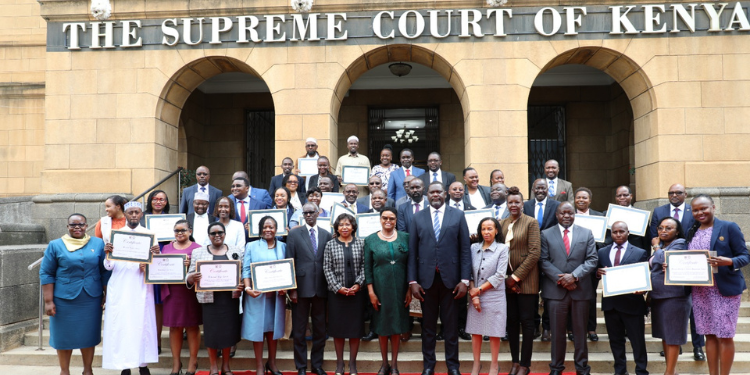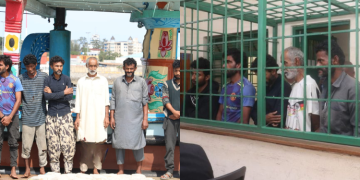The Judiciary of Kenya has announced plans to conduct an institution-wide Employee Census on Thursday, October 30, 2025, as part of ongoing efforts to strengthen integrity, efficiency, and accountability in its operations.
Operational Reforms
In a public press release dated October 30, 2025, Chief Justice and President of the Supreme Court of Kenya Martha Koome stated that the exercise, which will involve all judicial officers and staff, is part of the institution’s commitment to proactive reform and data-driven decision-making.
In November 2021, the Judiciary invited the Ethics and Anti-Corruption Commission (EACC) to conduct a systems review and audit of its policies, procedures, and practices.
The review aimed to identify gaps and strengthen measures promoting integrity and accountability within the institution.
The forthcoming employee census builds upon those recommendations by enhancing the Judiciary’s internal control and data accuracy frameworks.
Chief Justice Martha Koome stated that the exercise will enable the Judiciary to maintain reliable records essential for effective institutional planning.
She emphasized that accurate human resource data forms the foundation of strategic reforms, helping the Judiciary to manage its workforce efficiently while meeting the standards of transparency and public trust.
“In the same spirit of proactive reform and in pursuit of a transformative approach to human capital management and development, the Judiciary recognises that accurate and reliable data is essential for effective decision-making,” the stament read in part.
Accurate Data for Smarter Planning
The Judiciary said the 2025 Employee Census will strengthen workforce planning, support staff rationalization, and improve resource allocation.
It will also ensure that human resource systems remain efficient and aligned with the Social Transformation through Access to Justice (STAJ) blueprint.
The STAJ framework emphasizes efficiency, fairness, and staff welfare.
By using accurate data, the Judiciary aims to improve talent management, ensure equitable staff distribution, and eliminate role duplication.
The Judiciary last conducted a similar census in 2018.
The 2025 edition will use upgraded data systems to deliver higher accuracy and accountability standards.
Comparable initiatives have been undertaken by the Public Service Commission (PSC), Teachers Service Commission (TSC), and National Police Service Commission (NPSC), alongside several county governments.
Chief Justice Koome noted that these exercises have improved efficiency and transparency across the public sector, a trend the Judiciary seeks to replicate.
Judiciary Operations to Continue Uninterrupted
The Judiciary assured court users, advocates, and the public that court operations will proceed as scheduled during the census.
Coordination teams have been deployed to all stations to oversee the process.
The Judiciary said all registries and administrative offices will function normally, with systems in place to avoid disruption to hearings and service delivery.
Also Read: Dennis Onyango Reveals Raila Knew His Time Was Up and Recalls Last Instructions
CJ Koome reaffirmed the Judiciary’s long-term goal of building a modern, transparent, and accountable institution.
The employee census is expected to lay the foundation for sustainable human resource reforms, improved governance, and better service delivery across the justice system.
Justice Koome emphasized that the Judiciary’s reform journey remains guided by the principles of integrity and equality, in line with its broader vision of Social Transformation through Access to Justice (STAJ).
PSC Reforms
The Public Service Commission (PSC) has directed all government institutions to authenticate academic and professional certificates for civil servants to curb the use of fake credentials.
In partnership with the Kenya National Examinations Council (KNEC), the PSC is implementing a real-time digital verification system.
Also Read: KeNHA Announces Traffic Disruption Along Major Highway
The Commission uncovered tens of thousands of “ghost workers” and excess staff beyond approved establishment levels.
At the county level, several governments are undergoing audits and workforce rationalization.
Follow our WhatsApp Channel and X Account for real-time news updates.












































































